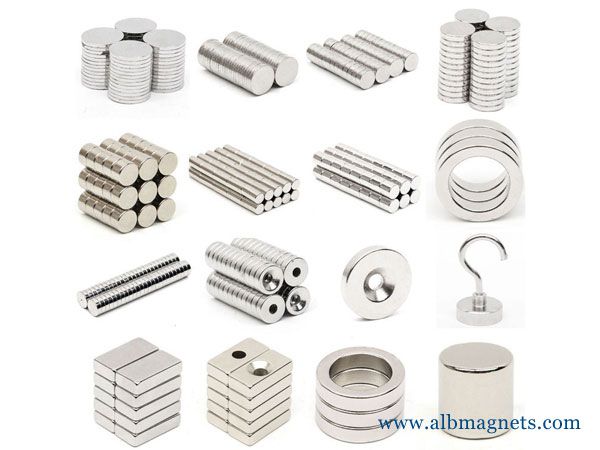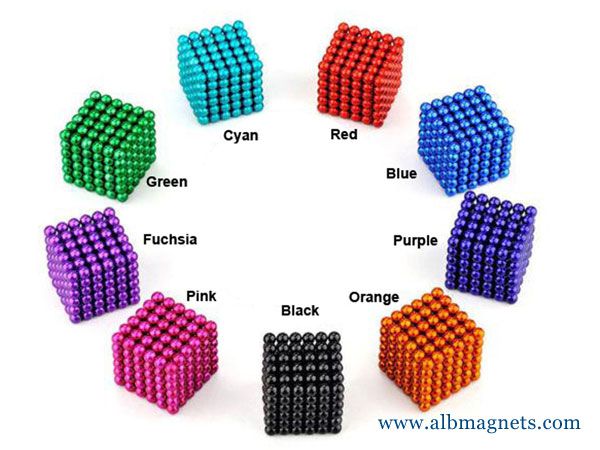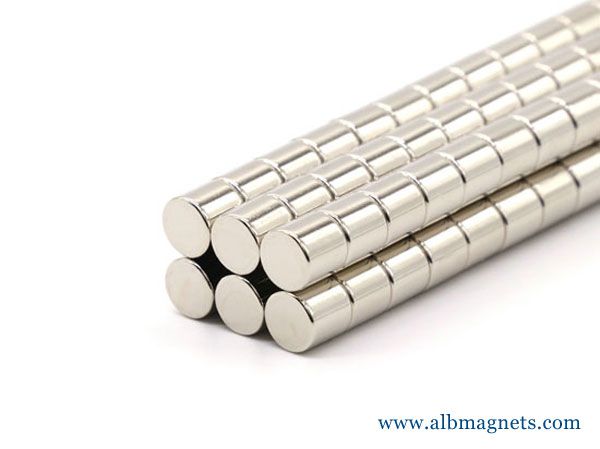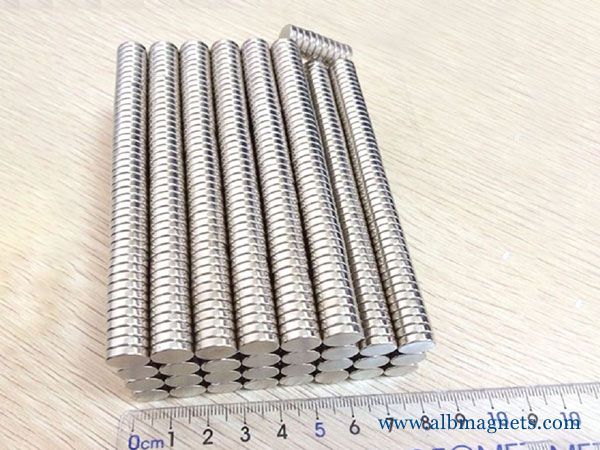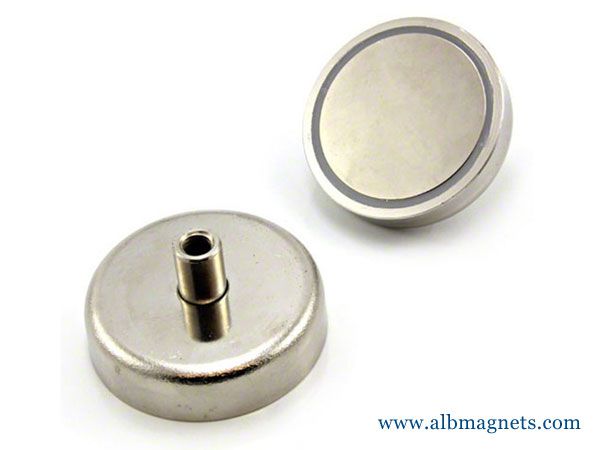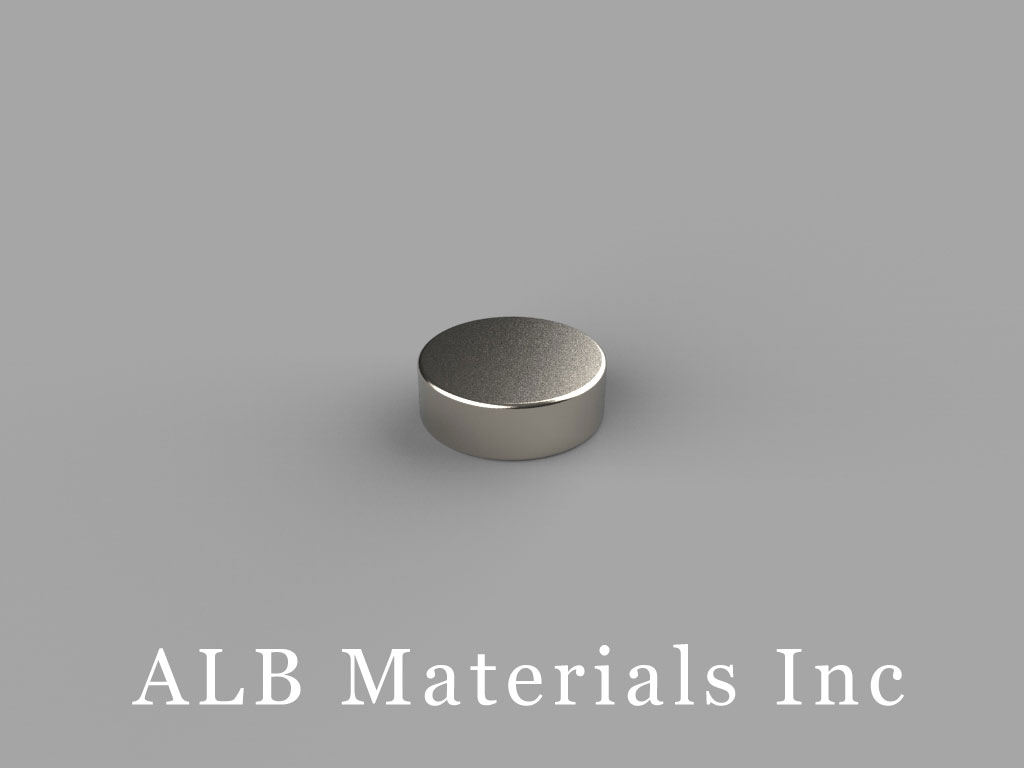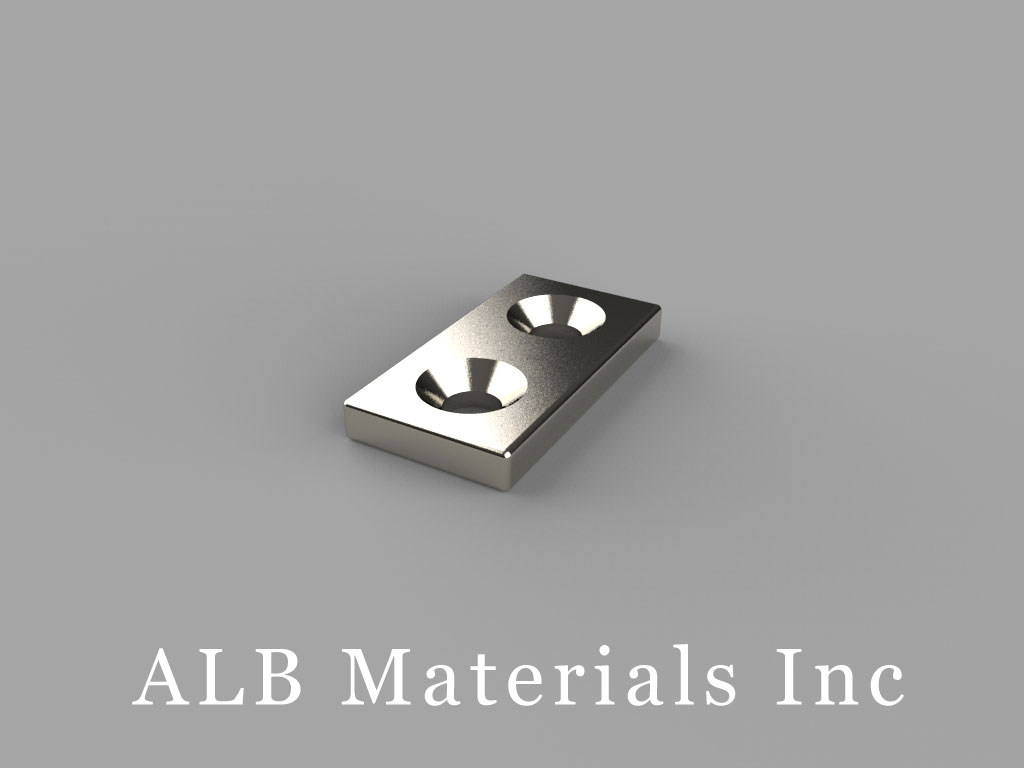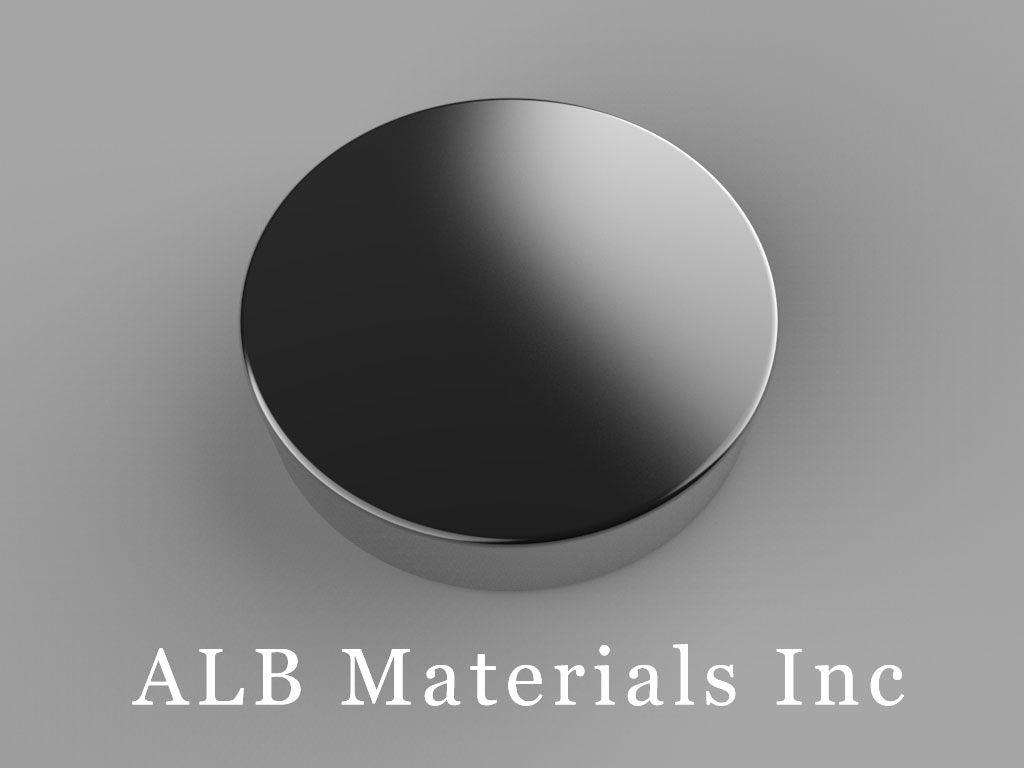401 Ryland St. Ste 200-A,
Reno, NV 89502
United States
E-mail: sales@albmaterials.com
- BX081-N52 Neodymium Magnets, 1 inch x 1/2 inch x 1/16 inch thick
- BEE6 Neodymium Magnets, 7/8 inch x 7/8 inch x 3/8 inch thick
- D20x1mm Neodymium Magnet, 20 x 1mm Disc Magnet
- D8Y0 Neodymium Magnets, 1/2 inch dia. x 2 inch thick
- DH21 Neodymium Magnets, 2/10 inch dia. x 1/16 inch thick
- DY04-N52 Neodymium Magnets, 2 inch dia. x 1/4 inch thick
- BX0X0A Neodymium Magnets, 1 inch x 1 inch x 5/8 inch thick
- B-W5H4L5-N50 Neodymium Magnet, 5x5x4mm Block Magnet
- DX003 Neodymium Magnets, 1 inch dia. x 3/32 inch thick
- D48DIA Neodymium Magnets, 1/4 inch dia. x 1/2 inch thick
- D3x1mm Neodymium Magnet, 3 x 1mm Disc Magnet
- DH18 Neodymium Magnets, 1/10 inch dia. x 1/2 inch thick
- B-W14H4L100-N45SHE Neodymium Magnet, 100x14x4mm Block Magnet
- B-W3H3.5L8-N50 Neodymium Magnet, 8x3x3.5mm Block Magnet
- DA4 Neodymium Magnets, 5/8 inch dia. x 1/4 inch thick
- Round Permanent Magnetic Chuck
What Are The Magnets
What are the magnets?
A magnet is an object that is made of materials that create a magnetic field.
Magnets have at least one north pole and one south pole.
A magnetic field is a region in space where a magnetic force can be detected.
Magnetism is the force of attraction or repulsion between substances made of certain materials, such as iron, nickel, cobalt, and steel.
The force of magnetism, simply put, is due to the motion of electric charges.
Magnets are present in most electronic devices.
In fact, anything that has a motor uses a magnet.
Televisions, computers and microwave ovens all operate with magnets.
Magnets are used to keep refrigerator doors closed and are even mounted on trucks that clean roads.
You’ll also find magnets in medical devices to create a magnetic picture, in trains, and in the systems used to slow down roller coasters.
More uses for magnets are found every day.
Magnets attract or pull, objects made with iron.
Paper clips, scissors, screws, nuts, and bolts are just a few common everyday objects that are magnetic.
A magnet will not attract paper, rubber, wood, or plastic.
It is not true that a magnet will attract any kind of metal.
For example, aluminum cans are metal but do not contain iron, therefore they are not magnetic.
Steel is a metal that is made with iron, so steel objects like tools and silverware are usually magnetic.
Top 10 facts
Most of the magnets you see around you are man-made.
Since they weren't originally magnetic, they lose their magnetic characteristics over time.
Dropping them, for example, weakens their magnetism, as does heating them, or hammering on them, etc.
Air-core magnets are created by current flowing through a wire.
That current produces the magnetic field.
Electromagnets are different because they have a ferromagnetic material (usually iron or steel) located inside of the coils of wire.
The core isn't air, it is something that aids in producing magnetic effects, so electromagnets are typically stronger than a comparable air-core magnet.
The Earth is a giant magnet.
Its magnetic field is like a bar magnet at its center.
Magnets are usually made from iron or steel, but aluminum, steel-iron, copper, nickel and cobalt can also be made into powerful magnets.
Many scientists believe that birds are able to find their way home by using the Earth's magnetic field to guide them on long-distance flights.
Some vets use magnets to pick up pieces of wire or other metal from inside the stomachs of large farm animals.
Today, new trains use magnets to lift them off the ground so that they float.
Floating reduces friction and allows the train to run more efficiently.
If you attach a bar magnet to a piece of wood and float it in a bowl of water, it will slowly turn and the magnet’s north pole will point towards the Earth’s the North Pole.
A compass has a tiny bar magnet in it and works the same way as a bar magnet in water, helping explorers find their way.
Did you know?
Magnets have two poles, a north pole, and a south pole.
The north pole of one magnet will repel and push away the north pole of another magnet.
The south pole will repel another south pole.
North and south poles are attracted to each other.
A magnetic field flows from North to South and these fields are not visible, but if you place a piece of paper on top of a magnet and sprinkle the fine iron powder on top, the shape of the invisible magnetic fields becomes visible as the fine iron powder clings to them.
There are many shapes of magnet and each has a different magnetic field shape.
Magnets can pull through gases, like air, but they can also pull through solids and even liquids, depending on the strength of the magnet.
A magnetic field is an area around the magnet where it can attract or repel things.
A magnet will affect a magnetic object only when it enters its magnetic field.
This is why a small magnet on one side of the room will not attract things on another side.
The strength of a magnet is stronger as you get closer to it, and likewise its strength is weaker as you are farther away.
Most metals are not attracted to magnets.
These include copper, silver, gold, magnesium, platinum, aluminum and more.
They may however magnetise a small amount while placed in a magnetic field.
Magnetic materials are made of thousands of tiny magnets called magnetic domains.
Before the material is magnetized, all the little magnets point in different directions, so their effects cancel each other out.
But a magnetic field can line them up so that they all point in the same direction.
This turns the material into a magnet.
Scientists measure magnetic fields with an instrument called a magnetometer.
The instrument can also be used to measure the magnetism in ancient rocks.
As the rocks formed, they were magnetized by the Earth’s field.
Rocks of different ages may be magnetized in opposite directions because the Earth’s magnetic field has often reversed.
By piecing together records from different places, scientists can work out how rocks have moved in the billions of years since the Earth was formed.
Look through the gallery and see if you can spot the following:
Horseshoe magnets
A compass uses a magnet to find north
Magnets on a board
A magnet with iron filings
Magnetic and non-magnetic materials
Magnets have been used by humans since ancient Greece.
It is believed that naturally occurring minerals called magnetite were first discovered by the Ancient Greeks in the area of Turkey.
Magnets used to be known as “lodestones”.
The Vikings were known as the first people to use this magnetic material to create compasses that allowed them to navigate across the water through poor weather conditions to discover and conquer new land.
It is thought that the Vikings kept the magnetic compass a secret for many years.
Magnetic compasses can now be found in every ship across the world to navigate the open seas.
Today almost all magnets are manufactured using various natural materials from around the world.
Magnetism is what gives magnets their ability to attract objects made of iron or steel.
A magnet creates around itself a region of space with special properties.
This region is known as a magnetic field.
When two magnets come near each other, their fields create forces that attract or repel.
The Earth is itself a huge magnet, and the force its field exerts on other magnets makes them point in a north–south direction.
This effect is used in the magnetic compass.
The most common magnetic material is steel, an alloy (mix) of iron, other metals, and carbon.
Pure iron becomes magnetized in a magnetic field but does not stay magnetic.
Steel can make a permanent magnet.
Once it is magnetised, it stays magnetised.
The two ends of a magnet are always different from each other.
The end that points north, if allowed to move freely, is called the north pole.
The other end is the south pole.
These magnetic poles behave rather like electric charges.
Poles of opposite kinds attract each other, while poles of the same kind repel.
Every magnet is surrounded by an invisible, three-dimensional magnetic field.
A field is a region in which something varies from point to point.
In Earth’s atmosphere, for example, wind speed and direction vary from place to place.
In a magnetic field, the strength and direction of the magnetic effect vary in a similar way.
The field is at its strongest near the magnet.
The idea of a magnetic field is based on the work of British scientist Michael Faraday (1791–1867) in the early 19th century.
He sprinkled particles of iron around magnets to reveal what he called “lines of force” stretching from one pole to another.
These helped him to explain many magnetic effects.
We now see lines of force as indicating the direction of the field, with their spacing indicating its strength.
Electromagnets are made from a wire carrying a current.
If the wire is coiled, the fields from each turn of wire produce a stronger field.
If the wire is wrapped around an iron core, the field gets stronger still.
An electromagnet can be a single coil (called a solenoid) or bent double, with two coils.
Electromagnets make it easy to handle scrap metal.
When the current is switched on, it creates strong magnetism that picks up a load of steel.
The crane swings round, the current is switched off, the magnetism disappears, and the steel drops where it is wanted.
Electromagnets have many other uses including the generation of electricity in hydroelectric dams.
Words to know:
atmosphere - the mixture of gases that surrounds an astronomical object such as the Earth
attraction - the power of attracting
compass - a device for finding directions, usually with a magnetized pointer that automatically swings to magnetic north
electromagnet - a magnet consisting of a core, often made of soft iron, that is temporarily magnetized by an electric current flowing through a coil that surrounds it
force - the power, strength, or energy that somebody or something possesses
friction - the resistance of rubbing of two objects against each other when one or both are moving
hydroelectric - generated by converting the pressure of falling or running water to electricity by means of a turbine coupled to a generator
magnet - a piece of metal that has the power to draw iron or steel objects towards it and to hold or move them
magnetic field - a region of space surrounding a magnetized body or current-carrying circuit in which the resulting magnetic force can be detected
magnetism - the phenomenon of physical attraction for iron, shown in magnets or by a moving electric charge or current
material - the substance used to make things
permanent - never changing or not expected to change
repulsion - a force between two bodies of the same electric charge or magnetic polarity that tends to repel or separate them.
Part of the content in this article is reproduced from other media for the purpose of transmitting more information and does not mean that this website agrees with its views or confirms the authenticity of its content. It shall not bear direct responsibility and joint liability for the infringement of such works.
If there is any infringement, bad information, error correction, and other issues in the content of this page, please contact us at info@albmaterials.com
Link to this article: https://www.albmagnets.com/blog/what-are-the-magnets.html
How to choose and buy a strong neodymium magnet? ALBMagnets is a professional company for strong magnet design and manufacturing,
providing you with reliable N35, N38, N42, N52, N42SH and other grade super neodymium magnets and SmCo rare earth magnets.




